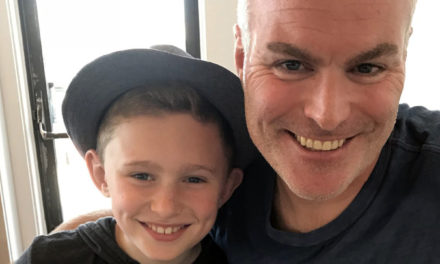It’s not often that a volunteer gets fired for trying to make a difference. But this is exactly what set Cathy Snyder, 58, in motion to help feed hundreds in her community. It all started when the mother of two from New Hope began volunteering at her local food pantry in 2009. That spring, she quickly noticed how the shelves were mostly stocked with cans and boxes of processed foods, like beans and mac-n-cheese, offering families in need little to no opportunity for fresh, nutritious ingredients. This was a stark contrast to what Snyder was serving at her own dinner table.
“I would leave the food pantry and go to this beautiful farmer’s market that just opened up about a half mile away to buy food for my family. I would be really proud to share this healthy, locally grown food with my teenage son and daughter. But when I started to do that on a weekly basis, it hit me that there was this food inequality,” Snyder recalls. “The people who need healthy food the most were the ones who could least afford it. The paradox in the system we have now is that the families that are struggling the most financially are buying the least nutritious foods. It just seemed so wrong.”
With this in mind, the next time she finished her shift at the food pantry, she drove her red Ford Excursion SUV to the New Hope Community Farmer’s Market across the river in Pennsylvania to see if the farmers might donate any fruits and vegetables that didn’t sell. Some were quite generous from the get-go.
“I would leave with a few bags of produce, like kale and swiss chard, that they didn’t need to hold onto,” she says. “I knew it wasn’t enough food for this one site where some 800 families depended on meal assistance, but it was a start.” After doing this for 3 or 4 weeks, however, Snyder got an important wake-up call from one of the farmers.
“One of the best things that happened is that I got told off,” Snyder laughs. “A female farmer said to me, ‘Cathy, you really need to stop asking me. You’re making me feel really bad. I can’t give you anything. I have to hold onto this for the farmer’s market the next day.’” The unexpected reprimand didn’t deter Snyder. An ambitious go-getter who had once worked in broadcast sales in her hometown of Philadelphia before traveling overseas with her family for 14 years, Snyder realized that she needed to be more strategic. So she asked the annoyed farmer, “What would make it easy for you to share your beautiful vegetables?”
Still ticked off, the woman replied, “Well, what you’re doing is not the way. If you can be at my farm at 11 a.m. on Wednesday when we go through our inventory and find what produce we can sell, what has to be composted, and what can be given away, I can fill your truck.” Snyder immediately jumped at the opportunity, and in that instant—before she even realized it—Rolling Harvest Food Rescue was born. From the first day Snyder showed up at this woman’s farm to pick up bags of slightly imperfect produce, she realized she had stumbled across a problem that had plagued farmers for years.
“Farmers have to comply with this almost impossible pursuit of perfection that consumers demand, which is why there is this surplus of irregular, slightly discolored, and maybe over-ripe foods getting tossed,” Snyder says. “As local farmers started hearing how we were rescuing food from going in the garbage, I quickly began collecting more stock than what the food pantry could handle.” Snyder tried to help implement policy and procedure changes at the pantry to prepare it for the sudden increase in inventory. But the food pantry pushed back. They were not ready to grow that quickly, so they let her go, which was devastating.
 After allowing herself to cry in the fetal position at home for a couple days, Snyder decided to move forward with Rolling Harvest full time, upping her hours from 15 a week to 10 hours a day during peak season. “It was an emotional decision to separate myself and continue what we had been doing on a much larger scale,” she says. Before parting ways with the local food pantry, Snyder had already begun reaching out to other nearby food pantries, hunger-relief sites, soup kitchens, domestic violence shelters, senior centers, and temporary housing to make use of all the fresh food.
After allowing herself to cry in the fetal position at home for a couple days, Snyder decided to move forward with Rolling Harvest full time, upping her hours from 15 a week to 10 hours a day during peak season. “It was an emotional decision to separate myself and continue what we had been doing on a much larger scale,” she says. Before parting ways with the local food pantry, Snyder had already begun reaching out to other nearby food pantries, hunger-relief sites, soup kitchens, domestic violence shelters, senior centers, and temporary housing to make use of all the fresh food.
“I would call these places and tell them that we had way more tomatoes or zucchini than we knew what to do with. That, in a nutshell, became our distribution model,” Snyder says. Soon enough, more and more volunteers began joining her in this noble crusade, including helping to make cold calls to collect and deliver food. And just like that, Rolling Harvest began to grow, like crops, literally from the ground up.
Since launching this food rescue initiative 6 years ago, Snyder and a dedicated team of 80 volunteers work with 25 farms (most of which are organic) and 45 hunger-relief sites within a 30-mile area that spans across Bucks, Hunterdon, and Mercer Counties. They have distributed an estimated 412,000-plus pounds of locally grown fruits and vegetables as well as organic meats to more than 14,000 families. Of those families, 27 percent are children and 12 percent are seniors.
Snyder has no plans to expand Rolling Harvest in the near future. “By keeping it small and geographically viable, connecting all of these resources within an area that we’ve identified as having this need, we have been able to create real relationships with farmers and food pantries,” she says. “These farmers trust us, which is the most essential part of the partnership. If we get too big, that can’t be sustainable.”
It’s common for Snyder and her team to get last-minute calls from her farmer friends with hot tips to access more food. For example, one recently invited her to collect as much broccoli as possible before the next day’s heat wave killed all the plants. Another called to tell her that his land was about to be bulldozed, so she was welcome to take as many tomatoes as she could carry, which turned out to be about 4,000 pounds.
Though Snyder wants to keep her operation intimate, she’s very open to sharing her model with others. “We have so many groups from other parts of the country that are reaching out asking for more information on how to get farmers to donate,” she says. “This will all be on our website. It should all be documented so that anybody who has the passion, commitment, and the luxury of time can make this happen.”







